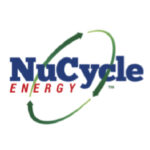Written by Tom Estabrook
Everything in life is a process, and business is simply a system of processes.
One of Symplicity Designs’ core beliefs is that 94% of Problems, Challenges, and Opportunities are Process problems…not People problems.
Fujio Cho, a past-president of Toyota, once said, “Brilliant results come from average people managing brilliant processes, while poor results come from brilliant people managing broken processes.” We can interpret this inspirational statement to a simple mantra: Fix the Process, and the People will excel.
Processes can be described in three ways:
- Processes that add value (meaning transforming form, fit, or function for the customer)
- Processes that enable value (meaning necessary to be done, but does not add value for the customer)
- Processes that add no value for the business or the customer (meaning waste)
You may be surprised to learn that only 20% of all processes in most businesses add value. 30% of the processes in most businesses enable value. That means 50% of the processes in most businesses add no value, and it is your customers that determine value.
At Symplicity Designs, we believe that your business processes should be designed from the outside-in. The way to do this is to ask yourselves “How does every process contribute to solving a customer’s problem and awesome customer experience?”
There is a process by which customers provide your business with a wealth of information, if you understand how the process works. Here are the three ways your customer communicates with you:
- What do they Expect? (This is what they are complaining about)
- What do they Express? (This is what they are asking for)
- What Excites them? (Solving their problem, even if they don’t know they have one)
To illustrate, in 1908, if Henry Ford had asked people what they wanted for transportation, he would have heard a resounding “I want a faster horse”. Instead, he asked what their biggest problem was, and he heard “the horse!” So he watched what his customers did to work around the problems with the horse, and he solved their problems.
More recently, I was talking with an Insurance company, and I asked “who was their biggest client?” They told me it was a construction company. I next asked “what is your client’s biggest problem?” They told me it was making premium payments in the off-season. Then I asked “how are you charging them?” They told me it was equal payments every month. Finally, I asked them “why don’t you sit down with them and match their payment schedule to their cash flow?” They changed the billing process, solved their customer’s problem, and increased their value to their customer.
Every business Symplicity Designs has worked with has a vision or strategic objective to get better at what they do. Yet getting better should not mean getting better at what you do. Rather, getting better means spending more time on doing what your customers want you to do. Getting better means doing more of what you already are good at doing. This is the best way to grow your value, your market, and your business.







